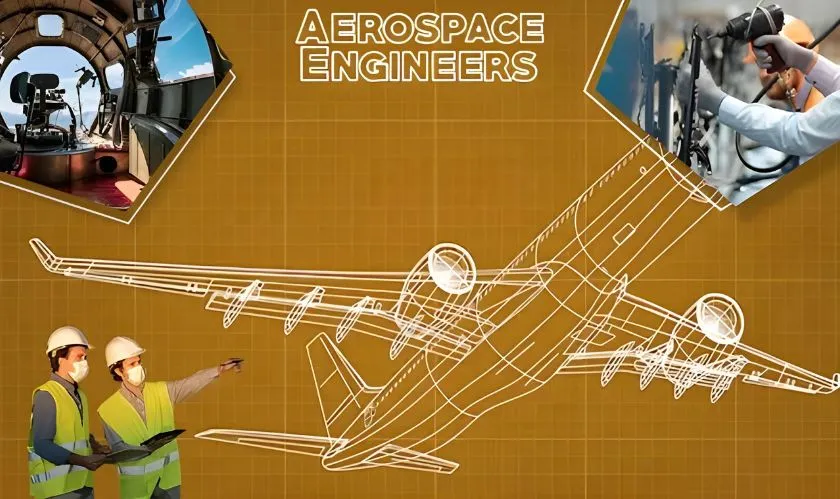Home Technology Aviation Top 10 Challenges Aerospace En...
Aviation

CIO Bulletin
06 June, 2024
The ever-increasing demands of both aviation and spaceflight mean that engineers must constantly push their limits and delve into unknown territory. However, laypeople may be surprised to learn that not all the challenges faced by engineers are necessarily technology-related. Human issues such as interdisciplinary collaboration and standards compliance are now also part and parcel of aerospace engineering, requiring engineers to be well-rounded individuals. Let’s look at a few of the aerospace engineering challenges these professionals are expected to overcome:
1. Aerodynamic Efficiency
Since the beginning, aerospace engineers have been tasked with enhancing the aerodynamic efficiency of both aircraft and spacecraft, allowing available propulsion systems to more effectively drive vehicles in atmospheric conditions, both on Earth and elsewhere. In day-to-day aviation, better aerodynamics also translates into reduced operational costs and sustainability, both of which are key in democratising the benefits of aerospace technologies.
2. Propulsion Systems Development
Developing advanced propulsion systems is a key challenge for aerospace engineers. Creating engines that are powerful, efficient, and sustainable to operate is an immense interdisciplinary challenge, and aerospace engineers must work with other highly talented professionals to continuously eke out more performance and reduce compromises.
3. Structural Integrity and Lightweight Materials
Aerospace engineers use a combination of computer modelling and real-world tests to ensure new designs and modifications deliver the required performance without compromising safety. To fully optimise the structural integrity of designs, aerospace engineers must also work closely with materials engineers to select and develop materials suited for very specific applications.
4. Guidance, Navigation, and Control (GNC) Systems
Aerospace engineers also develop sophisticated guidance and control systems to ensure the precise operation of aircraft and spacecraft. With unmanned drones now fast becoming the most common category of aerospace vehicles, engineers must work to ensure their safety and continued viability in increasingly crowded skies.
5. Noise Impact Reduction
If you’re of a certain age, you may remember that passenger airports were considerably louder than they are today. The lower noise pollution levels of modern aircraft and airports are directly a result of aerospace engineers developing quieter engines.
While noise may not seem like such an important concern, the development of quieter aircraft has allowed airports to be situated closer to population centres, improving access to air travel and reducing the resulting carbon emissions associated with long-distance road travel. Quieter aircraft have also minimised the negative impacts of noise in areas surrounding airports, resulting in reduced stress and disruption to wildlife and improved life quality for nearby residents.
6. Spacecraft Design
Designing spacecraft that can withstand the harsh conditions of space is another major challenge given to aerospace engineers. Unlike with regular aircraft, they must also consider the effects of microgravity, ionizing radiation, and extreme temperatures on designs. They must also cooperate closely with teams of specialists to create often bespoke subsystems that are robust enough for the demands of a given space mission.
7. Safety and Reliability
One of the principal tasks of aerospace engineers is to conduct rigorous design testing and evaluation. They may perform simulations and analyse data to identify potential issues within different systems. In addition, they may also have to design the tests so that they more closely mimic real-world conditions, ensuring the safety of the craft and its crew within given performance envelopes.
8. Integration of Advanced Technologies
Engineers need to keep tabs on developments in other fields, with the view of integrating advanced technologies into aerospace designs. To visualise these integrations, aerospace engineers must be able to think laterally and develop the know-how that allows these technologies to work seamlessly with existing systems.
9. Cost Efficiency
While any competent engineer can design systems for maximum performance, maximum performance is rarely warranted in a vast majority of real-world scenarios. Indeed, designing vehicles and components with the best performance possible can be unrealistically costly in most instances. This means that aerospace engineers must also be capable of developing cost-optimised designs and processes that do not unduly compromise quality.
10. Sustainable Aviation and Space Exploration
Though air and space travel are not new, they have historically been the most expensive endeavours ever undertaken by mankind. Thanks to the work of aerospace engineers, air travel is no longer the luxury it once was, and space travel is now on track to becoming routine as well. In addition, engineers are now also investigating alternative fuels and creating energy-efficient systems to reduce the environmental impact of aerospace activities, making them viable in a wider range of real-world scenarios.
Celebrating the Unsung Heroes of Our Modern World
Even non-specialised aerospace engineers have to face challenges that require a deep understanding of engineering principles and human behaviour. As with other kinds of engineers, their ability to resolve multilayered problems from both a technical and user standpoint helps drive safety and innovation in our modern world. With aerospace technologies now an integral part of everything from digital communications to affordable air travel, it’s good to sometimes step back and marvel at what these highly trained professionals have helped humanity achieve.







